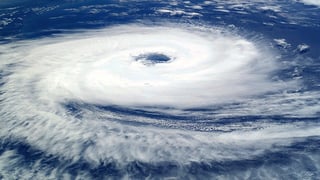 Many businesses within the hospitality industry were negatively impacted by the string of devasting hurricanes that hit the United States and the Caribbean during the late summer and early fall of 2017. Many hotels and resorts, among other businesses, were left inoperable due to the damages their facilities sustained during Hurricanes Harvey, Irma and Maria and many of those hotels and resorts continued to pay their employees not only on the day the hurricane hit, but during their recovery efforts and while the business was left inoperable. For these businesses, the Hurricane Disaster Relief credit can bring economic relief.
Many businesses within the hospitality industry were negatively impacted by the string of devasting hurricanes that hit the United States and the Caribbean during the late summer and early fall of 2017. Many hotels and resorts, among other businesses, were left inoperable due to the damages their facilities sustained during Hurricanes Harvey, Irma and Maria and many of those hotels and resorts continued to pay their employees not only on the day the hurricane hit, but during their recovery efforts and while the business was left inoperable. For these businesses, the Hurricane Disaster Relief credit can bring economic relief.
In response to the destructive hurricanes that struck the U.S. and its territories late this year, President Trump on September 29, 2017 signed the Disaster Tax Relief and Airport and Airway Extension Act of 2017 (HR 3823) to provide targeted tax relief for taxpayers impacted by Hurricane Harvey, Irma and Maria. Included in the legislation is an employee retention tax credit for qualified employers located within designated disaster areas related to the hurricanes. The tax credit is equal to 40% of qualified wages of up to $6,000 (a maximum credit of $2,400) for each qualified employee.
Employers with locations within designated disaster zones whose businesses were rendered inoperable as a result of the damage sustained by either Hurricane Harvey, Hurricane Irma or Hurricane Maria, but continued to pay their employees during specific periods may be eligible for the tax credit:
- Period for Hurricane Harvey – between August 23, 2017 and the date the location resumed operations or January 1, 2018 (whichever comes first)
- Period for Hurricane Irma – between September 4, 2017 and the date the location resumed operations or January 1, 2018 (whichever comes first)
- Period for Hurricane Maria – between September 16, 2017 and the date the location resumed operations or January 1, 2018 (whichever comes first)
Similar to the Work Opportunity Tax Credit, the Disaster Relief Credit is a federal credit utilized against an employer’s federal income tax liability. The credit falls under the General Business Credits which allows any excess credit to be carried forward for twenty years. In addition, the credit cannot be taken on the same wages used to calculate the Work Opportunity Tax Credit for eligible employees for the same period.
For information on the Work Opportunity Tax Credit, download your complimentary guide below.


